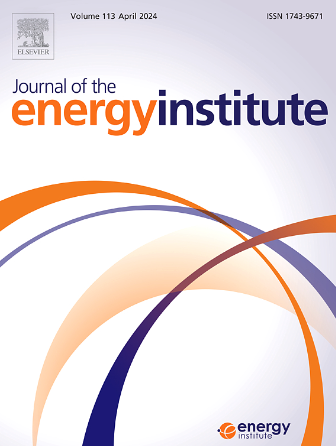Promoting effect of calcium substitution of La-Fe based perovskites for enhanced cellulose and lignin biomass CO2 gasification
IF 5.6
2区 工程技术
Q2 ENERGY & FUELS
引用次数: 0
Abstract
Biomass CO2 gasification produces green high-quality syngas through the re-utilization of CO2, which is a highly promising and efficient low-carbon technology. This work investigated the effect of Ca doping on CO2 catalytic gasification performance over La-Fe based perovskite catalysts of cellulose-rich biomass (Straw, ST) and lignin-rich biomass (Coconut shell, CS) feedstocks. Comprehensive characterization techniques including XRD, XPS, SEM, BET, Raman spectra and TG were employed to analyze structural evolution and physicochemical properties. The experimental results showed that Ca doping significantly improved catalytic activity. Among them, L6C4FO exhibited superior catalytic performance compared to other samples, with total syngas yields of 1.81 times (699.62 mL/g) and 3.66 times (938.03 mL/g) higher than the non-catalytic samples of ST and CS, respectively. Moreover, it also demonstrated good stability in the cyclic gasification experiments. The characterization results revealed two compensation mechanisms dependent on Ca doping levels. Below 40 % substitution at A-sites, oxygen vacancy formation served as the primary charge compensation mechanism, substantially enhancing gasification activity. At higher doping concentrations (>40 %), the increase in Fe valence state became main compensation mechanism while oxygen vacancy generation was constrained. Additionally, the substitution of Ca significantly enhanced the surface basicity, which improved the adsorption and activation ability of CO2. This study provides valuable applications for the perovskite modification strategies and the efficient CO2 biomass catalytic gasification.
La-Fe基钙钛矿钙取代对纤维素和木质素生物质CO2气化的促进作用
生物质CO2气化通过对CO2的再利用产生绿色优质合成气,是一项极具发展前景的高效低碳技术。本文研究了钙掺杂对富纤维素生物质(秸秆,ST)和富木质素生物质(椰子壳,CS)原料上La-Fe基钙钛矿催化剂CO2催化气化性能的影响。采用XRD、XPS、SEM、BET、拉曼光谱、TG等综合表征技术分析了材料的结构演化和理化性质。实验结果表明,Ca的掺杂显著提高了催化剂的催化活性。其中,L6C4FO的催化性能优于其他样品,总合成气产率分别比ST和CS的非催化样品高1.81倍(699.62 mL/g)和3.66倍(938.03 mL/g)。在循环气化实验中也表现出了良好的稳定性。表征结果揭示了两种依赖于Ca掺杂水平的补偿机制。在a位取代率低于40%时,氧空位形成是主要的电荷补偿机制,大大提高了气化活性。在较高掺杂浓度(> 40%)下,Fe价态的增加成为主要的补偿机制,而氧空位的产生受到抑制。此外,Ca的取代显著提高了表面碱度,提高了CO2的吸附和活化能力。该研究为钙钛矿改性策略和高效的CO2生物质催化气化提供了有价值的应用。
本文章由计算机程序翻译,如有差异,请以英文原文为准。
求助全文
约1分钟内获得全文
求助全文
来源期刊

Journal of The Energy Institute
工程技术-能源与燃料
CiteScore
10.60
自引率
5.30%
发文量
166
审稿时长
16 days
期刊介绍:
The Journal of the Energy Institute provides peer reviewed coverage of original high quality research on energy, engineering and technology.The coverage is broad and the main areas of interest include:
Combustion engineering and associated technologies; process heating; power generation; engines and propulsion; emissions and environmental pollution control; clean coal technologies; carbon abatement technologies
Emissions and environmental pollution control; safety and hazards;
Clean coal technologies; carbon abatement technologies, including carbon capture and storage, CCS;
Petroleum engineering and fuel quality, including storage and transport
Alternative energy sources; biomass utilisation and biomass conversion technologies; energy from waste, incineration and recycling
Energy conversion, energy recovery and energy efficiency; space heating, fuel cells, heat pumps and cooling systems
Energy storage
The journal''s coverage reflects changes in energy technology that result from the transition to more efficient energy production and end use together with reduced carbon emission.
 求助内容:
求助内容: 应助结果提醒方式:
应助结果提醒方式:


